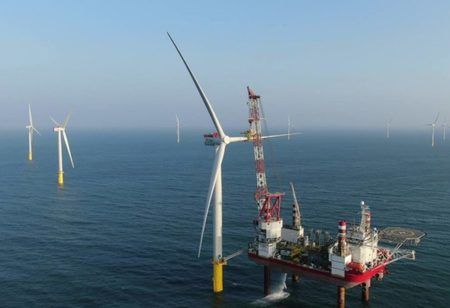
Government Eyes Hydrogen-Based Process for Steel Production to Cut Carbon Emissions

 In a move aimed at significantly reducing carbon emissions in the steel industry, Nagendra Nath Sinha, Secretary of the Ministry of Steel, announced that the government is working on introducing a green hydrogen-based process for steel production. Speaking at a workshop titled 'Forging Sustainability in the Steel Sector', Sinha highlighted the potential of using 100 percent hydrogen for Direct Reduced Iron (DRI) making, which could lead to a substantial reduction in emissions.
In a move aimed at significantly reducing carbon emissions in the steel industry, Nagendra Nath Sinha, Secretary of the Ministry of Steel, announced that the government is working on introducing a green hydrogen-based process for steel production. Speaking at a workshop titled 'Forging Sustainability in the Steel Sector', Sinha highlighted the potential of using 100 percent hydrogen for Direct Reduced Iron (DRI) making, which could lead to a substantial reduction in emissions.
Despite the promise of this technology, Sinha acknowledged its current high costs and emphasized the need for collective development and adoption to ensure a sustainable future. He noted that India's carbon emissions per ton of crude steel are 25 percent higher than the global average. Contributing factors include the limited availability of natural gas, the quality of iron ore requiring beneficiation, and the restricted supply of scrap, with domestic scrap generation between 20-25 million tonnes annually.
To address these issues, a task force involving the Ministry of Mines and the Ministry of Environment, Forest and Climate Change is actively promoting the beneficiation of low-grade iron ore to enhance its suitability for steelmaking. Sinha also pointed out that historical factors have affected scrap availability and mentioned the Extended Producer Responsibility (EPR) policy for the auto sector, aimed at increasing vehicle scrap availability.
Sinha stressed that 90 percent of emissions in steelmaking come from within the factory gates, highlighting the industry's substantial control over its emissions. He called on the industry to take proactive steps towards sustainability, urging it to assume the role of 'trustees of the Earth' in reducing emissions and promoting sustainable practices.
To support these efforts, the Ministry of Steel has established 14 task forces focusing on various aspects of sustainability, including enhancing energy efficiency, utilizing renewable energy sources, and developing inputs to reduce emissions. The ministry is also exploring the use of green hydrogen and carbon capture, utilization, and storage technologies.
Water consumption in steelmaking was identified as another critical area for improvement, with India's levels being higher compared to other countries. Efforts are underway to reduce water usage in the industry. Sinha praised the Securities and Exchange Board of India's (SEBI) introduction of the Business Responsibility and Sustainability Reporting Format, encouraging companies to take this reporting seriously.
Leena Nandan, Secretary of the Ministry of Environment, Forest and Climate Change, reiterated India's commitment to its updated Nationally Determined Contributions (NDCs) for 2030, which aim for 50 percent of energy to come from non-fossil fuels. She emphasized the need to reduce the emission intensity of the economy by 45 percent and called for actionable collaborations within the steel industry.
Nandan highlighted the necessity of transforming ideas into concrete actions, stressing that the industry's sustainability efforts must be driven by a deep-seated sense of responsibility. The combined efforts of the government and the steel industry are expected to pave the way for a greener and more sustainable future in steel production.